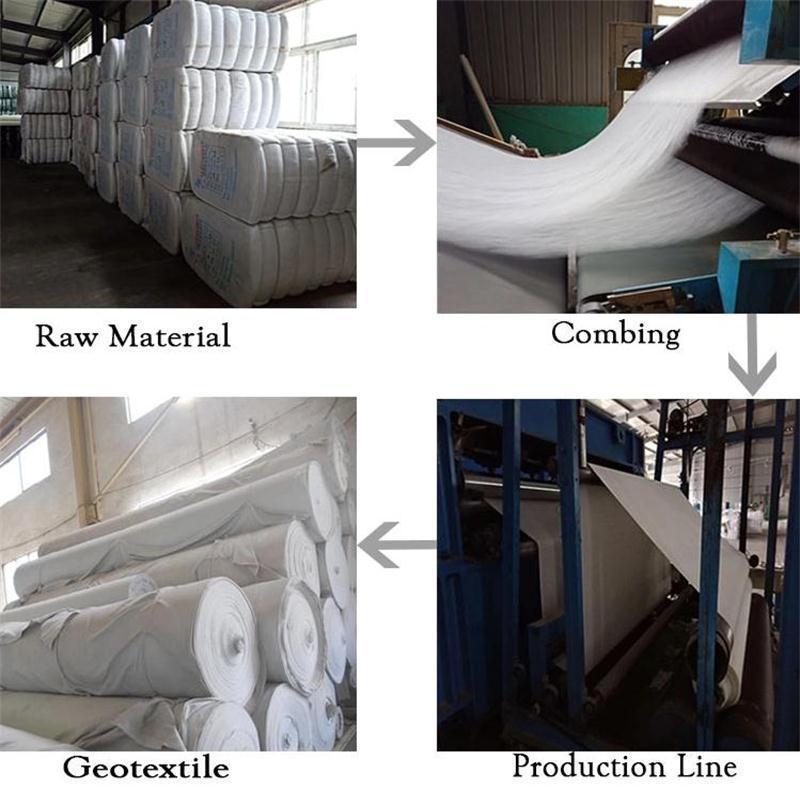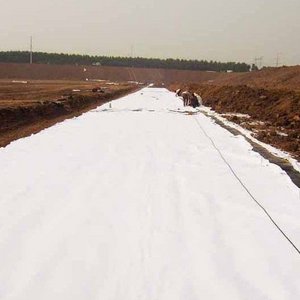- Product Details
- {{item.text}}
Quick Details
-
Application:
-
Apartment
-
Design Style:
-
Contemporary
-
Place of Origin:
-
Shandong, China
-
Brand Name:
-
Tianyan
-
Model Number:
-
002
-
Type:
-
Geotextiles
-
Name:
-
PP/PET 100-600g/m2 non-woven geotextile fabric for road
-
Brand:
-
Tianyan
-
Width:
-
2-6.2m
-
Performance feature:
-
Good flexibility, acid, alkali, corrosion and aging resistance
-
Product name:
-
Geotextile Non Woven Fabrics
-
Standard:
-
GB Standard
-
Certificate:
-
CE/ISO9001
Quick Details
-
Warranty:
-
Lifetime
-
After-sale Service:
-
Online technical support
-
Project Solution Capability:
-
Others
-
Application:
-
Apartment
-
Design Style:
-
Contemporary
-
Place of Origin:
-
Shandong, China
-
Brand Name:
-
Tianyan
-
Model Number:
-
002
-
Type:
-
Geotextiles
-
Name:
-
PP/PET 100-600g/m2 non-woven geotextile fabric for road
-
Brand:
-
Tianyan
-
Width:
-
2-6.2m
-
Performance feature:
-
Good flexibility, acid, alkali, corrosion and aging resistance
-
Product name:
-
Geotextile Non Woven Fabrics
-
Standard:
-
GB Standard
-
Certificate:
-
CE/ISO9001
PP/PET 100-800g/m2 non-woven geotextile fabric



1.manufacturer/competitive price
2.nonwoven geotextile
3.made of PP/PE
We can do the PP and PET non woven geotextile,we have produce it over ten years,i believe our product will fit you need.
|
Material: |
virgin PET. Recycle PET |
|
Color: |
White, black ,grey or as your demand |
|
Technical: |
Needle punched and thermally bonded |
|
Width: |
Max we can do is 6m |
|
Length/roll |
As your demand |
|
Delivery port: |
Xingang,tianjin city |
|
Package: |
PE film and woven bag outside or as your demand |
|
Product time: |
Usually Within two weeks |
|
Usage: |
1.Filtration The filtration layer of the dykes, river canal, seacoast, concrete slope, retaining walls. At the same time of preventing the clay granule from passing, it allows the water and the gas pass through freely. |
|
2.Separation:
, surface of theairdrome and parking lot and the groundsill, different dam materials. It isolates the soil and the gravel of two kinds different granule pathway from the groundsill or other buildings. |
|
|
3 Adding muscle:
retaining wall, slope protection, etc in which distributes the earth stress, prevents the side-displacement of the earth body and improves the earth body stability. |
|
|
Payment: |
30T/T in advance+70% T/T against all the copies of the original docunemnts or L/C at sight |
|
NO. |
Specification Item |
Specification |
Note |
||||||||||
|
100 |
150 |
200 |
250 |
300 |
350 |
400 |
450 |
500 |
600 |
800 |
|||
|
1 |
Weight Variation% |
-8 |
-8 |
-8 |
-7 |
-7 |
-7 |
-7 |
-7 |
-6 |
-6 |
-6 |
|
|
2 |
Thickness mm> |
0.9 |
1.3 |
1.7 |
2.1 |
2.4 |
2.7 |
3.0 |
3.3 |
3.6 |
4.1 |
5.0 |
|
|
3 |
Width Variation% |
0.5 |
|||||||||||
|
4 |
Breaking Strength KN/m> |
2.5 |
4.5 |
6.5 |
8.0 |
9.5 |
11.0 |
12.5 |
14.0 |
16.0 |
19.0 |
25.0 |
MD-CD |
|
5 |
Elongation Break % |
25~100 |
MD-CD |
||||||||||
|
6 |
CBR Mullen Burst Strength KN> |
0.3 |
0.6 |
0.9 |
1.2 |
1.5 |
1.8 |
2.1 |
2.4 |
2.7 |
3.2 |
4.0 |
|
|
7 |
Opening Size 90 mm |
0.07~0.2 |
|||||||||||
|
8 |
Vertical Permeability Coefficient cm/s |
K×(10-¹~10-³) |
K=1.0-9.9 |
||||||||||
|
9 |
Tear Strength KN> |
0.08 |
0.12 |
0.16 |
0.20 |
0.24 |
0.28 |
0.33 |
0.38 |
0.42 |
0.46 |
0.6 |
MD-CD |

Method of Construction
Step 1
Form the path tray
- excavate the tray as for an aggregate path, with the exception that the depth does not need to reach a solid base
- form a base that is level and even for laying the geotextile
- remove any protruding bog wood, stone or boulders to prevent distortion or puncturing of the matting
- if the peat is very wet, or has no vegetative content, form the tray depth and sides with good size turfs, after laying matting
Step 2
Lay the geotextile matting
- line the path tray with the geotextile matting, cutting it to the required width
- to take up curves and bends in the path either fold the matting or cut it to suitable lengths, allowing an overlap of at least 300mm
- secure folds or overlaps with larger aggregate stone to prevent them protruding up through the path material
- if the matting is laid wider than the path place large turves, or boulders, over it to secure and form the required path tray width
- to prevent aggregate migration into the peat, or peat into the path structure, the matting may be folded halfway up the tray sides
- to prevent subsequent exposure at the path edges tuck folded up matting back from the path tray and dig under the surrounding vegetation, or place turfs over the top
Step 3
Lay the geogrid
- where required, lay the geogrid over the matting, cut to the required path width, and for bends in the path alignment; as with the matting joins should overlap by 300mm
- where there is an excess on either side, due to the variable path width, it should be dug into the tray edges, or, if the matting is folded up, cut to the exact size
- the geogrid should not curve up the tray sides; it is important that no geogrid edges are left exposed after the surface has been laid and compacted
Step 4
Incorporate drainage features
- construct drainage features as for an aggregate path, with the exception that geotextile should be laid to continue into construction trenches
- for ease of laying, and to provide additional strength, cut the geotextile to allow a full overlap across the drainage trench width
Step 5
Construct the aggregate path.
- take care to prevent any puncturing of the matting when laying and compacting the lower layer of base, or sub-base material
- care is also required if moving aggregate along the prepared path tray with a powered track barrow; minimise the number of movements as far as possible
Step 6
Edge finishing
- make sure that any turfs already laid are effective in covering the geotextile and containing the aggregate
- the path edges may require further turfing and landscaping, to define the line and ‘soften’ the appearance
- use excess turf and spoil from the tray excavation to re-instate any eroded or damaged ground, and for in-filling any borrow pits (see Introduction to Restoration Techniques)
TROUBLE-SHOOTING
Key points to watch out for:
- avoid the possibility of geotextile becoming exposed - keep path construction deep enough to cover it and to avoid erosion
- ensure matting, or geogrid, is not sticking up after surface compaction - use good size turf effectively at path edges
- incorporate drainage features into the path
VARIATIONS
Other methods have traditionally been used to float paths over deep peat, particularly heather or tree brashings, or wooden stakes. These rely on the preservative nature of the peat and, depending on its acidic balance, may break down quickly.
Where it is not feasible to excavate a path tray a ‘causeway’ may be constructed with a geotextile base. The path sides are contained by large boulders with spoil and turfs, which must be placed to provide a solid edge. If the path is traversing a slope the uphill slope may provide an edge. A double course of boulders or very large turves will be required to take a causeway path through a particularly wet area.
FAQ
1. Q: What's about your production capacity?
A: We produce 10 x 40ft container per day for our product.
2. Q: How about your delivery time?
A: Within 7-14 days after deposit, we always deliver the goods according to customer's requirement.
3. Q: What's about the minimum order quantity?
A: The MOQ is 5000m2, customer can mix different sizes in one 20GP. We suggest at least 20GP,as by our exporting experience, 20GP container sea freight is more economic.
4. Q: How about quality guarantee of your product?
A:1) Material Purchase Control. Our Material are imported from Saudi Arabia. Those country specializing in better raw material.
2) Advanced production equipment, producing ASTM specification data.
4)We could provide you TRI or BTTG test report if you need.
5. Q: Do you have stock?
A: All geomembrane we send to customers are new product. We don't have any stock to ensure customers use best new product and new patterns.
6. Q: Terms of payment
A: 1). First time cooperation, we can accept 30% TT deposit, the balance should be paid against copy of B/L within 10 days.
2). By irrevocable LC at sight.
7. Q: What certificates do you have?
A: CE, ISO, SGS, TRI, BTTG, MSDS
Website: http://www.chinatinhy.com













